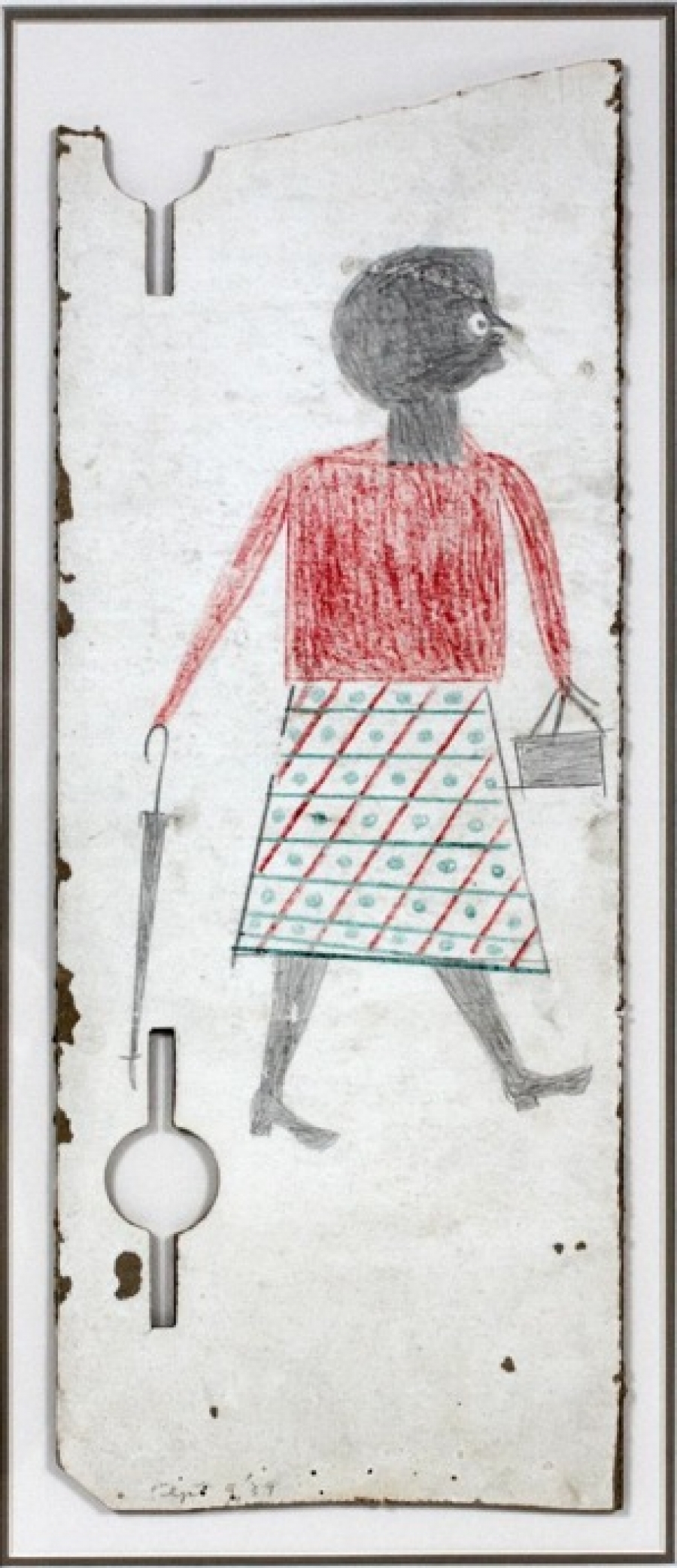BILL TRAYLOR
1854-1949
Between Worlds: The Art of Bill Traylor, Smithsonian American Art Museum (Washington D.C.) 2019
Due South: Highlights from the Permanent Collection, Mississippi Museum of Art (Jackson) 2019
The Improvisational Eye: Works on Paper by Self-Taught Artists, Montgomery Museum of Fine Arts (Montgomery) 2019
Drawn Together Again, The FLAG Art Foundation (New York) 2019
Gorey’s Worlds, David Owsley Museum of Art (Muncie) 2018
Outliers and American Vanguard Art, National Gallery of Art (Washington D.C.) 2018
Inside the Outsider: Five Self-Taught Artists from the William Louis-Dreyfus Foundation, Naples Museum of Art (Naples) 2017
Bill Traylor: Drawings from the Collections of the High Museum of Art and the Montgomery Museum of Fine Art, American Folk Art Museum (New York) 2013
Traylor in Motion: Wonders from New York Collections, American Folk Art Museum (New York) 2013
Great and Mighty Things: Outsider Art from the Sheldon and Jill Bonovitz Collection, Philadelphia Museum of Art (Philadelphia) 2013
Inner Worlds Outside, traveling exhibition, Sala de Exposiciones de la Fundacíon "La Caixa" (Madrid); WhiteChapel Gallery (London); Irish Museum of Modern Art (Dublin) 2006
Bill Traylor, William Edmondson and the Modernist Impulse, Studio Museum (Harlem); Birmingham Museum of Art (Birmingham); The Menil Collection (Houston) 2005
Black Folk Art in America 1930-1980, Corcoran Gallery of Art (Washington, D.C.) 1982
Sobel, Mechal, Painting a Hidden Life: The Art of Bill Traylor, Louisiana State University Press, Baton Rouge, 2009
Sacred and Profane: Voice and Vision in Southern Self-Taught Art, ed. Carol Crown and Charles Russell, University Press of Mississippi, Jackson, 2007
Inner Worlds Outside, exhibition catalogue, Fundacíon "La Caixa," WhiteChapel Gallery, Irish Museum of Modern Art & Ediciones El Viso, Madrid, 2006
Bonsteel, Michael, Bill Traylor Drawings: From the Collection of Joseph H. Wilkinson, Chicago Office of Fine Arts, Chicago, 1988
Livingston, Jane and John Beardsley, Black Folk Art in America, 1930 – 1980, University Press of Mississippi, Jackson, 1982
Bill Traylor is among the earliest recorded African-American artists, bearing witness to history and recording it in his own pictographic artworks. Traylor was born into slavery on a Southern plantation, experiencing the effects of the American Civil War and the reforms that followed. Traylor was twelve years old when the 13th Amendment passed, emancipating him and his family. He remained on the plantation as a sharecropper for the majority of his life. In 1908, the plantation was sold, forcing Traylor and his family to relocate.
After his children began to depart north as part of the Great Migration, Traylor moved to nearby Montgomery, where he lived on the streets and began creating depictions of his experience on the plantation. He was 82 years old. It was in Montgomery where he met young artist Charles Shannon, who encouraged Traylor’s work and provided him with materials. Shannon would also go on to arrange Traylor’s first solo show at a Montgomery art centre.
Done in pencil, crayon and tempera on found cardboard, the work includes innovative depictions of animals and both enslaved and freed characters in stark, colorful scenes. The works reference Traylor’s life as a slave and sharecropper, as well as his later experiences on the city sidewalks. Figures are stacked and arranged in an often hieroglyphic silhouette, formed from blocked colors and spindly limbs. Eyes, buttons and props act as small flourishes of detail.
These simple drawings convey a history of oppression, labor and culture specific to his environment. Beyond this, Traylor’s authentic works reveal his own distinct individuality. His sidewalk silhouettes of city folk and memories of plantation animals intertwine into a collective portrait of the American Deep South as Traylor saw it.
Following his initial exhibition, Traylor’s work was acquired by the High Museum of Art in Atlanta, the Museum of Modern Art in New York, the Smithsonian American Art Museum, and the Philadelphia Museum of Art, among others.




